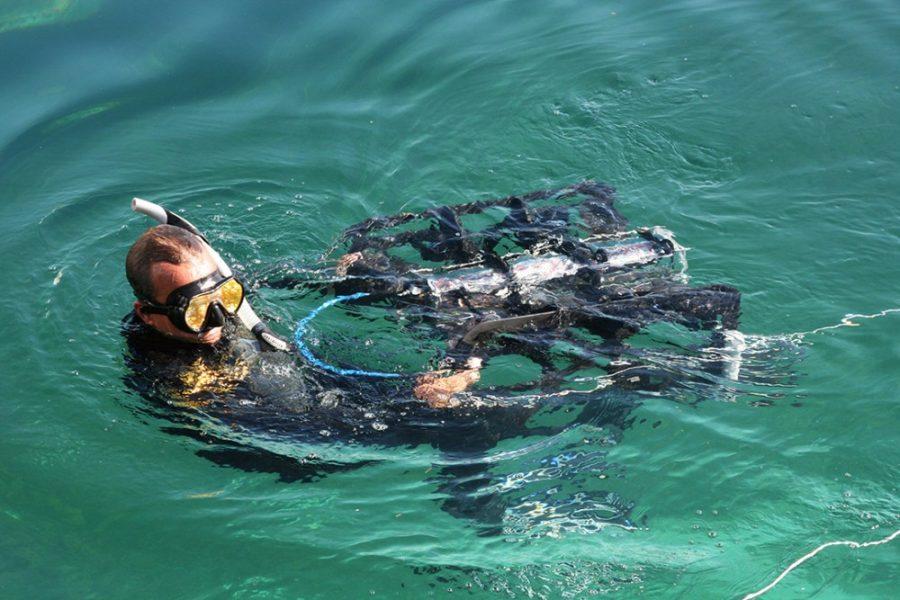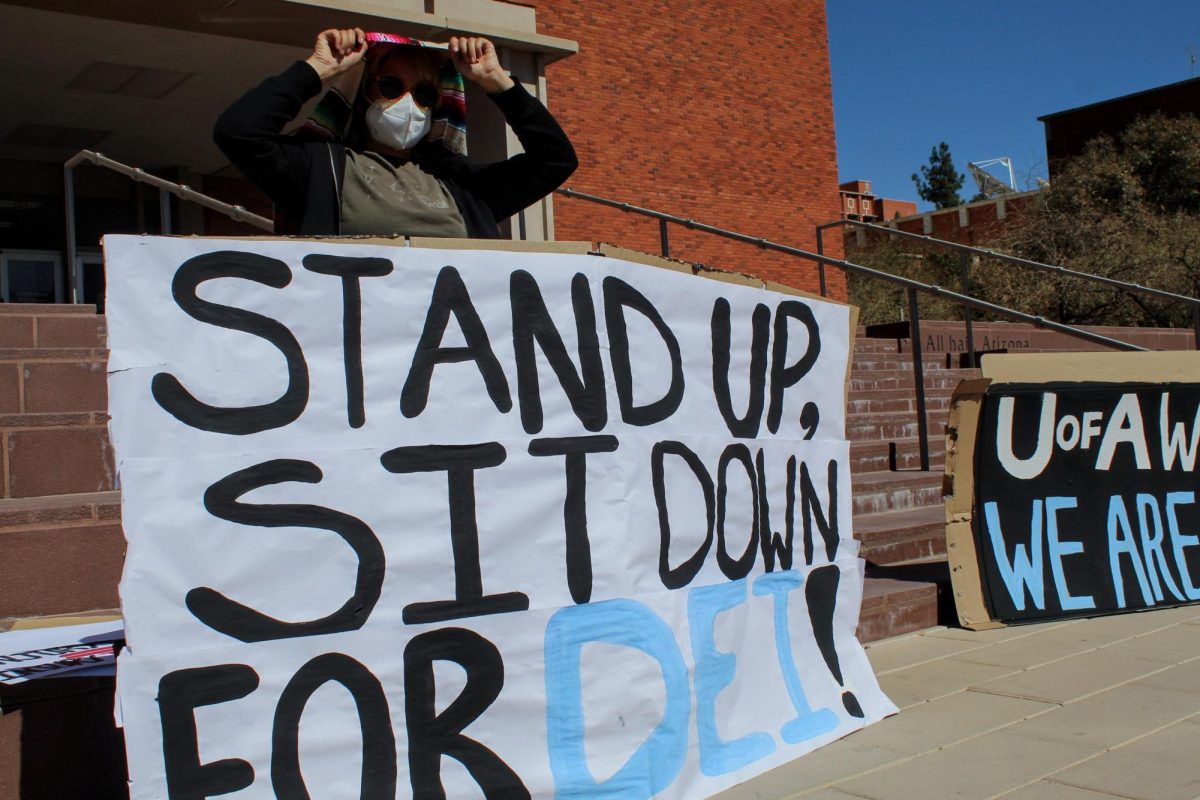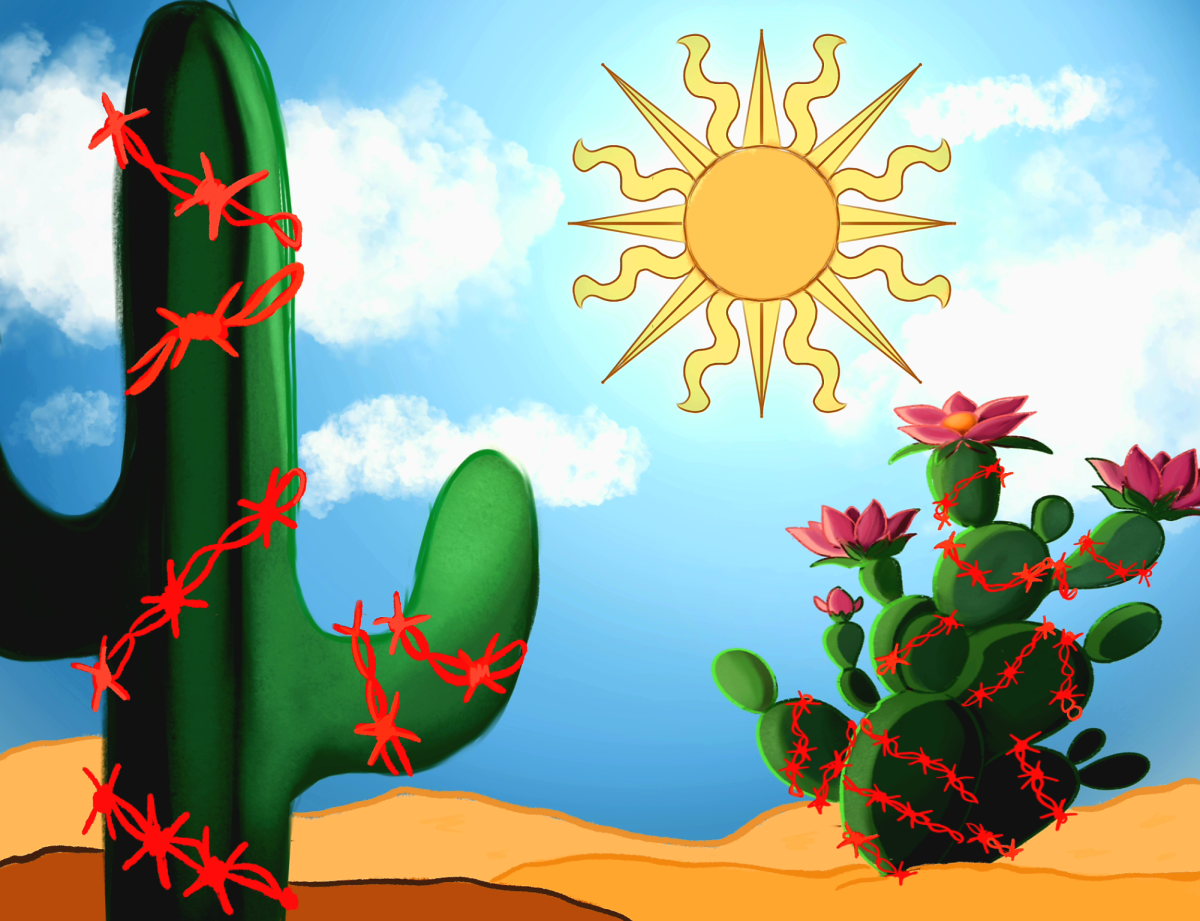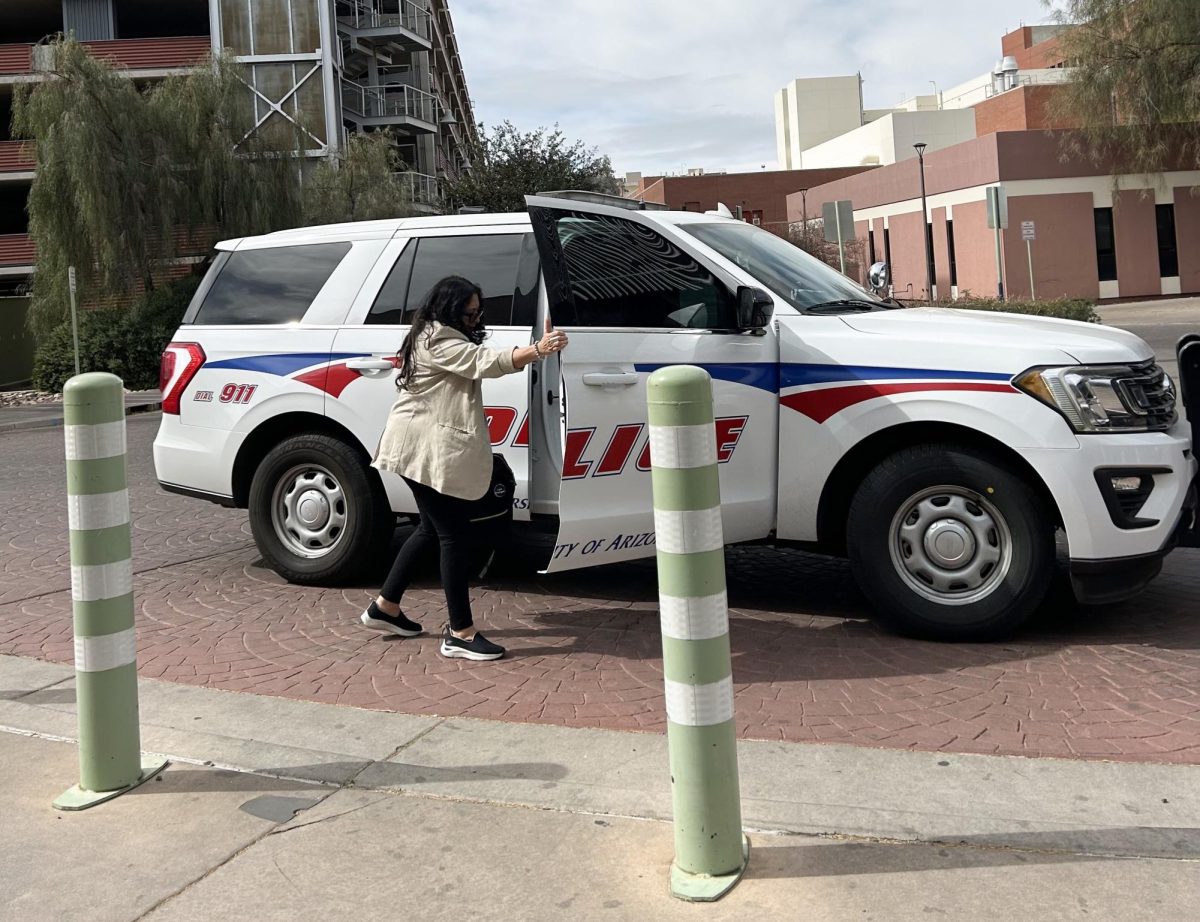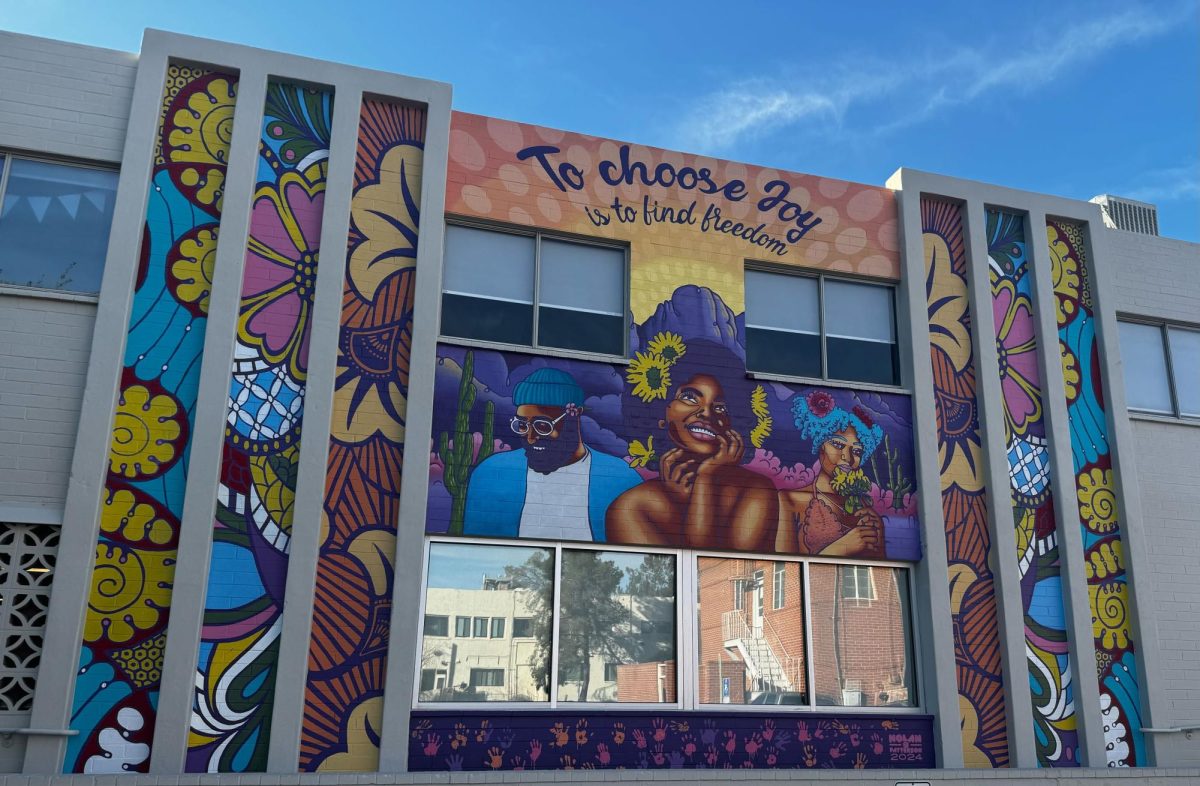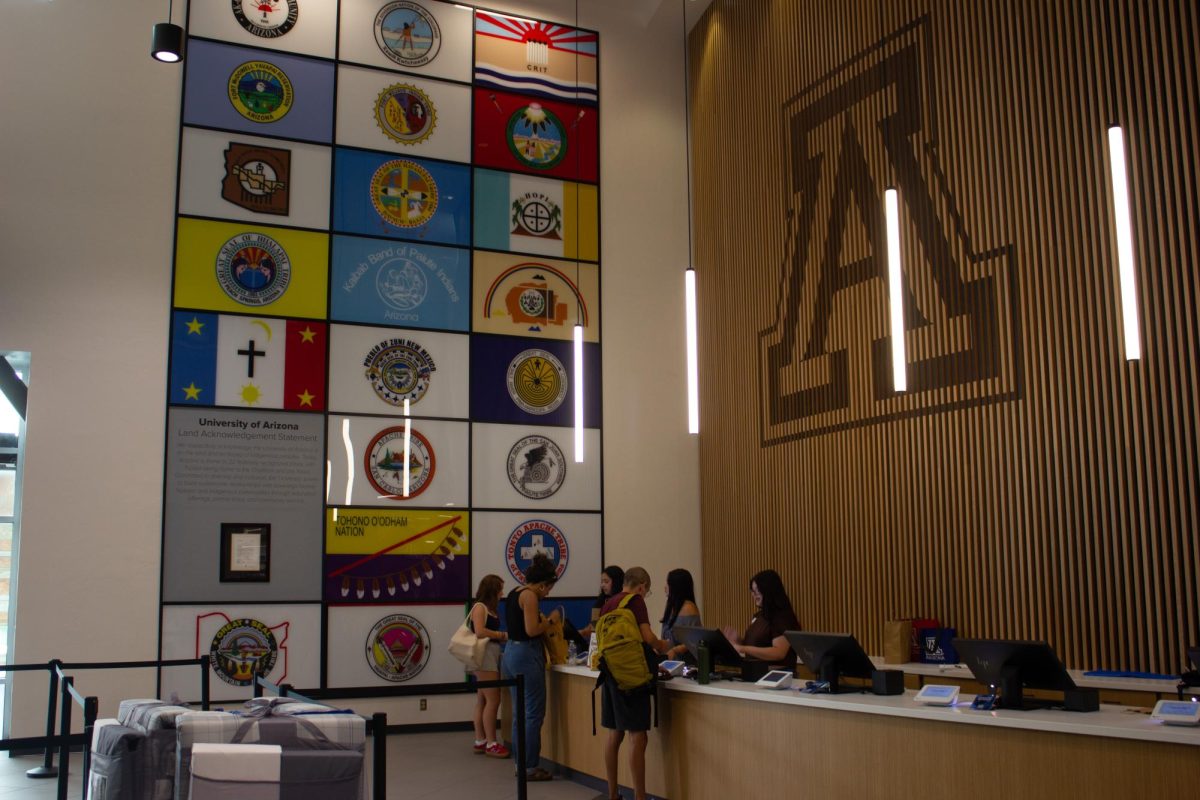An unlikely team from the UA placed in the top five at last week’s 18th annual International RoboSub Competition in a David versus Goliath-type fashion.
The Autonomous Underwater Vehicle – University of Arizona is a small student club recognized by the Associated Students of the University of Arizona that battled it out against the elite robotics and aquatic schools from around the world. The AUVUA was outnumbered and out-funded compared to the other teams, but found a way to pull off a surprising
top-five finish for a $1,000 prize and a place among the international crème de la crème.
“Some of the other competitors in this, for example Cornell [University], who has won the last three years, has an annual budget of $100,000 and more than 40 members,” said Jacob Gold, a mechanical engineering junior and first-year team member responsible for constructing the vehicle known as Danger ‘Zona.
“A lot of it was unique design, software and luck on our part… Teams that should have crushed us had either mechanical or technical problems,”
he added.
This year 37 teams from universities around the world such as the National University of Singapore and École de technologie supérieure of Montreal, gathered in the SSC Pacific TRANSDEC pool at the Point Loma military base in San Diego, Calif., for the competition co-hosted by the U.S. Navy.
Industry leaders and big-name sponsors gathered to scout the best talent and creative minds in constructing a fully autonomous underwater vehicle that can maneuver itself, perform tasks and make decisions entirely on its own while underwater. Each team races to complete a underwater obstacle course with the best time, fewest mistakes and best score.
“The general consensus was there was a 15 percent chance [going into the semi-final run] that it would do what we wanted it to do,” Gold said. “However, we were all cautiously optimistic going into the finals.”
The team is comprised of eight members from the UA, a UA adviser, two advisers in Phoenix and a collection of community sponsors and donors that funded the project.
The club started in the fall of 2012 with the goal of competing in the RoboSub competition every year. Since the first competition, the team improved in all aspects of design and engineering including mechanical, electrical and software.
Previously, the team’s best finish was in 2014 at 12th place with the completion of all navigational objectives. This year going into the first day of competition, the team had yet to test their vehicle underwater.
“The propellers were not working until two days before the competition,” Gold said.
The first day, Danger ‘Zona’s capabilities consisted of submerging the vehicle three meters and going straight toward a fixed heading.
“We were basically shooting darts,” Gold said.
As time went on their capabilities increased, and they were able to attempt all tasks.
Luckily the hotel where the 400-plus engineers congregated for the week allowed teams to test vehicles in the hotel pool between 10 p.m. and 5 a.m.
The team spent many all-nighters perfecting their vehicle in their hotel room, which they turned into a make-shift workshop by positioning the hotel room table in between the two beds.
The Danger ‘Zona cost a total of $3,500 to build. A majority of the funding came from club president Kevin Forbes, who supplements the bills with paychecks from his full-time job while pursuing his graduate degree in computer science. Forbes’ two bosses and Gold’s father also helped by donating money.
Equipment used in the design includes two GoPros that stream real-time visuals, three separate computers each performing different functions, thrusters, propellers and a borrowed Doppler Velocity Log, which cost $16,000.
The AUVUA has partnered with Fredi Lajvardi from Carl Hayden High School’s robotics team in Phoenix since 2012. In exchange for borrowing the DVL for the competition, the team builds the DVL enclosure and helps students in Phoenix with programming. The DVL is crucial in the vehicle’s ability to navigate through the objectives and acts like an underwater GPS.
Gold added that the university “didn’t give us a single cent,” which makes competing against teams with a $100,000 annual budget and a single piece of equipment worth three times more than AUVUA’s vehicle a daunting task.
Despite being cheap, and built from scratch just five weeks before the first day of the competition, the Danger ‘Zona scored well in the competition.
The competition was divided into three sections: qualifying rounds, semi-finals and the finals. The course consisted of 13 objectives varying from passing underwater gates to navigating color-coded buoys in order, among other underwater tasks, which are scored by judges based on time and execution.
During the qualifying rounds, the teams had 20 minutes to complete seven main tasks and pass six markers in the pool as quickly as possible, but the final time was the only score that counted.
“We were able to get several [objectives] done in the time it would take other teams to do one,” said Gold. “We completed six of 13 objectives in about [three minutes and thirty seconds].”
In addition to its speedy score, the club was the only vehicle to perform a barrel roll through an underwater gate, which scored major style points and helped advance the team to the finals.
This year, the design primarily consisted of plastic instead of aluminum, the design-base for the previous year’s model. Plastic is closer to the density of water—providing more stable balance while submerged.
Gold noted this design would be expanded upon for the next two years instead of starting over from scratch like the team has done in the past.
Moving forward, Forbes said the goal is to get the university more involved.
“This is what we can do with $3,500; just imagine what we can do with say $10,000,” Gold added.
Forbes said the team is always looking for new software, mechanical and electrical engineers. He said it’s a great opportunity to apply what you learn and rub elbows with some of the biggest names in the business, like the Association for Unmanned Vehicle Systems International Foundation, SOLIDWORKS, MathWorks, SpaceX, U.S. Navy and Blue Robotics.



